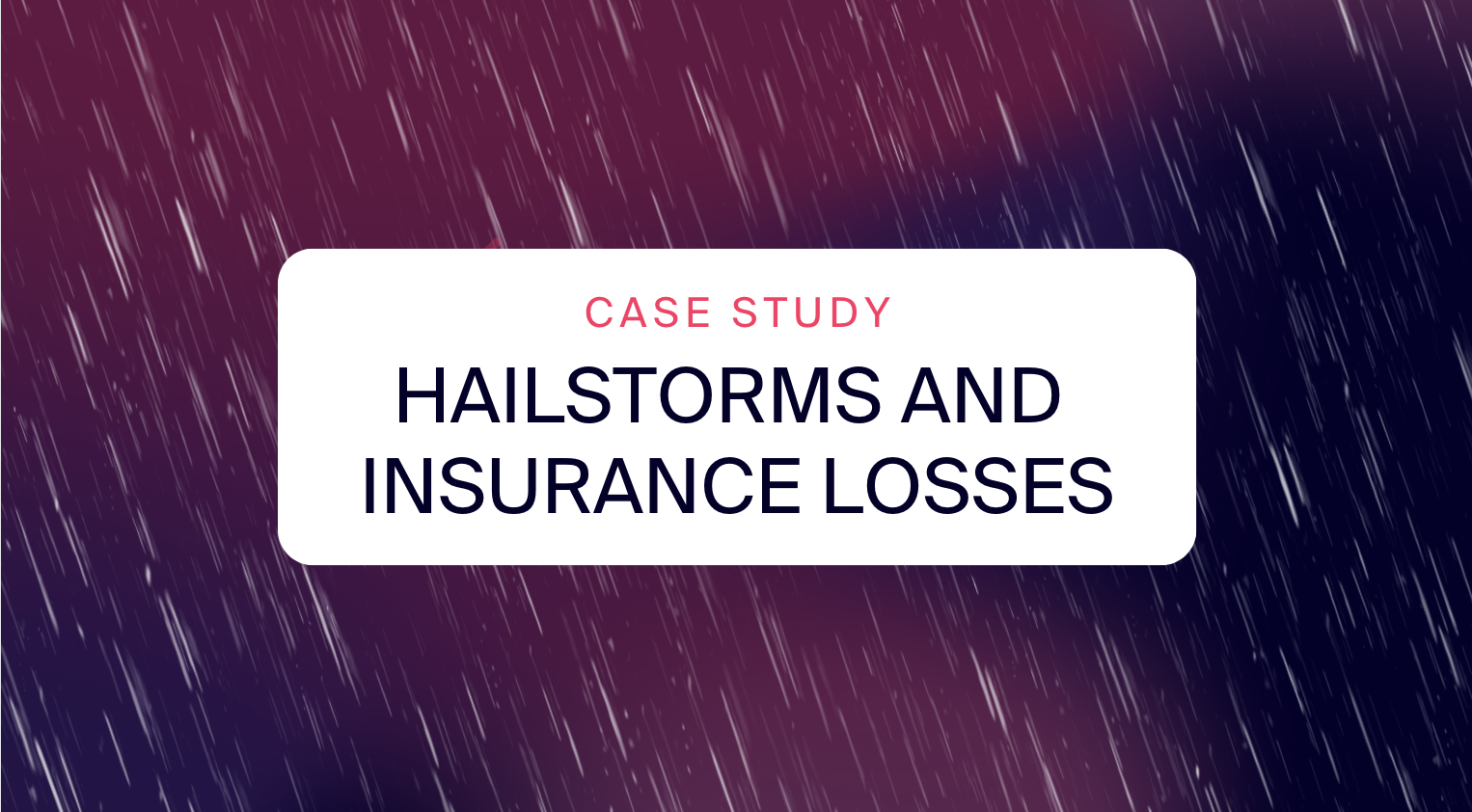How Carriers are Adapting to Record-Breaking Hail Losses
Facing a record $50 billion in 2023 storm losses, carriers are pivoting to Z-HAIL, an AI-powered model that's reshaping hail risk management and unlocking a low-risk market.


“We’ve blown through our reinsurance. It’s on us the rest of the year.”
A recent client meeting was a scenario that was all too familiar in today’s landscape: how to stem out-of-control catastrophe losses. The first half of 2023 witnessed US severe convective storm insured losses surging past an astonishing 34 billion dollars, the second costliest on record. This year alone has seen 14 billion-dollar thunderstorm events, 8 of which boast a multi-billion-dollar price tag. The events have been widespread, with significant storms in Texas, Arkansas, Kentucky, and across the plains and southeast. For this specific client, three of these billion-dollar thunderstorms represented the three largest losses in company history.
A Closer Look at the Primary Culprit: Hail
Losses from hail were center stage. With a sizable portion of the portfolio in the hail belt, the company had historically relied on a deductibles strategy to keep losses in check. With hail losses growing and spreading across a wider geography, the tactics needed to shift. The blunt, “machete-like” approach would need to be sharpened to a precision “scalpel” to prevent pricing themselves out of the market.
They were already underway on significant digitization and modernization efforts, including implementing a new underwriting and rating platform. But there was more work to be done. The client identified several problem areas where ZestyAI could help, including:
Pre-fill Precision
A substantial portion of data came from customers or agents, leaving room for errors, in the client’s words, “unintentional or worse.” Validated, third-party data could improve completeness and accuracy. Armed with precise data, underwriters could feel more confident pre-approving certain roof types and conditions, improving the customer experience.
Optimizing Inspections
Over 95 percent of properties are underwritten with a photograph provided by the agent. As the client said, “Reps still take the photos.” While it’s getting the job done (for now), there’s a significant opportunity to use aerial imagery to get a more complete picture and better allocate the limited inspection resources.
Streamlining Underwriting
The client shared, “Our underwriters are passionate. They double-check the siding type, which could save $1 here or $2 there. But we need to be more efficient.” There’s an opportunity to both reallocate where underwriting spends their time and introduce new variables that could identify risk.
Improving Product Fit
They already knew they needed to refine their deductible strategy. But increasing the use of ACV endorsements to minimize losses from the roofs in the worst condition was another tool they were looking to leverage more.
Another area of concern was inflation: “Inflation is driving loss severity.” It’s more important than ever to have an accurate view of roof complexity, materials, solar panels, and other factors that could increase replacement costs.
Z-HAIL: Immediate Impact Without Rate Filings or Major Process Changes
They called on ZestyAI to learn more about Z-HAIL, an Artificial Intelligence-powered climate risk model that predicts the frequency and severity of hail claims. The client was particularly interested in the “scalpel-like” approach of using property-specific information like roof condition, climatology, and geographic data for a holistic view of hail risk for each building.
Because they’re still in the midst of system upgrades and policy migrations, updating the rating model is not feasible in the near term. But, Z-HAIL can immediately be used as a new underwriting variable and to inform the deductible and ACV endorsement strategy.
And, time is of the essence. Policies that they are renewing today are the ones that will be incurring losses in next spring’s severe convective storm cycle. They need to take action now to optimize their inspection criteria, modify deductibles, and add ACV endorsements to make a material reduction in catastrophic losses next year.
Interested in how Z-HAIL can help stem catastrophic losses?
Schedule a demo and see ZestyAI in action









